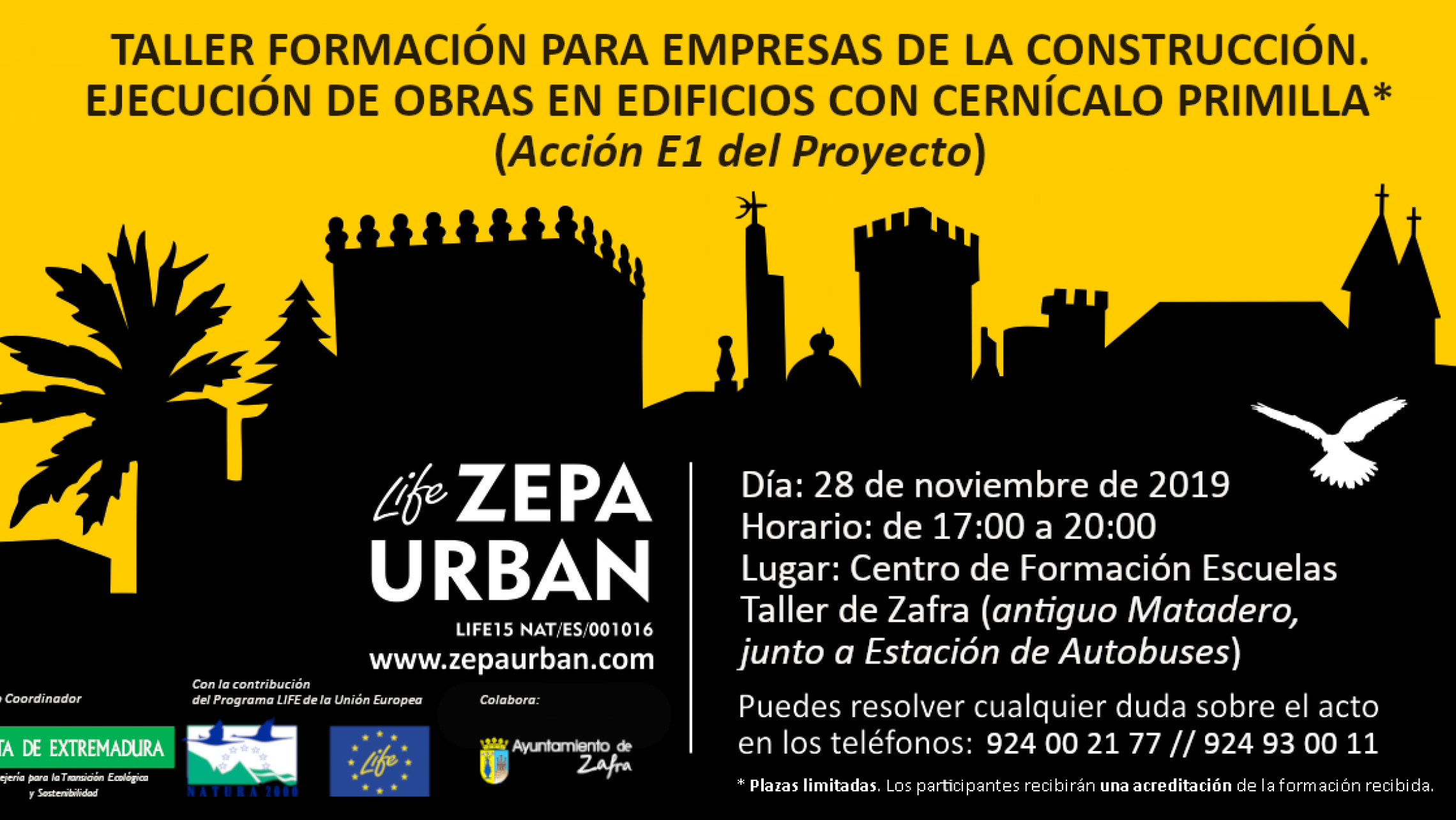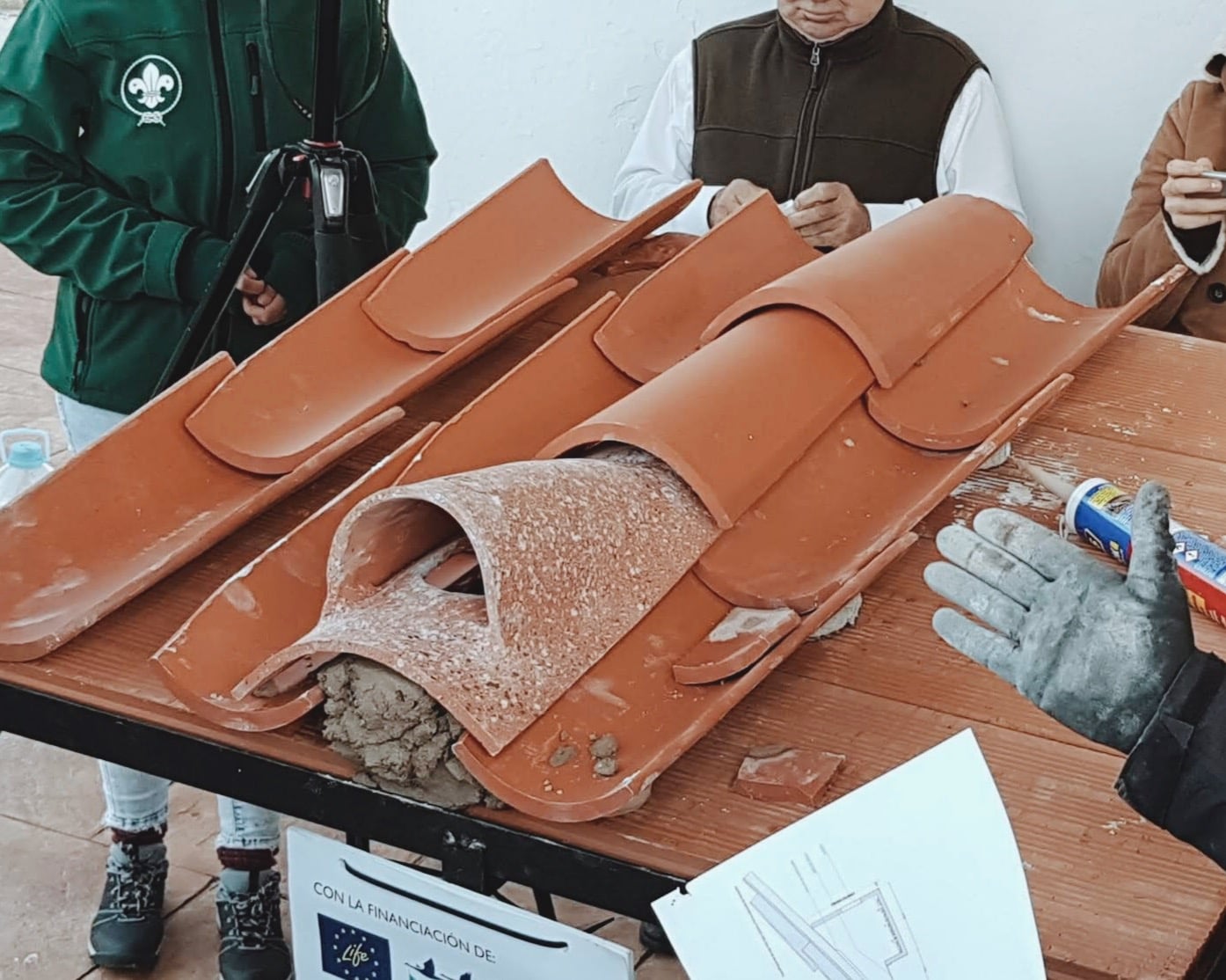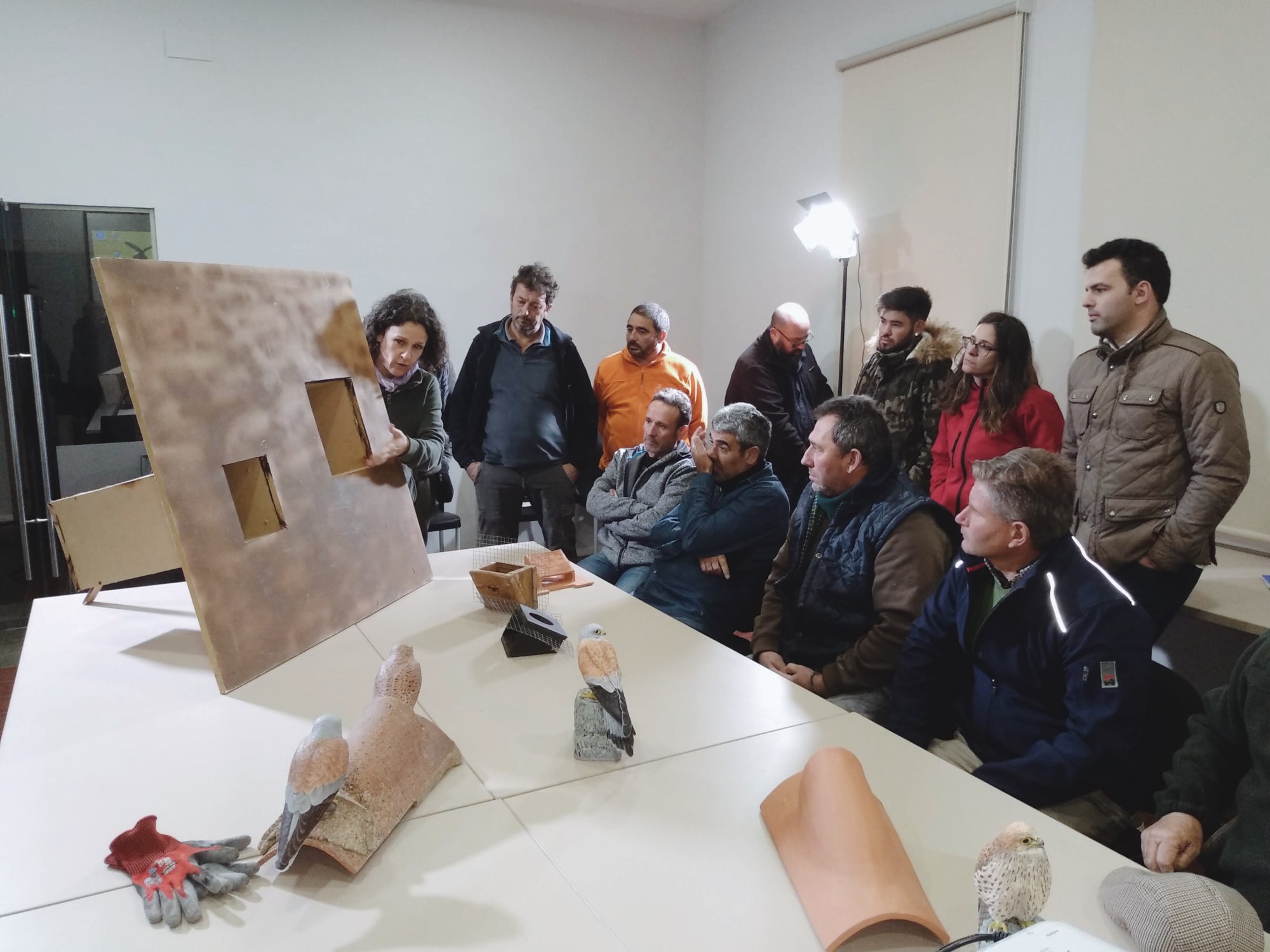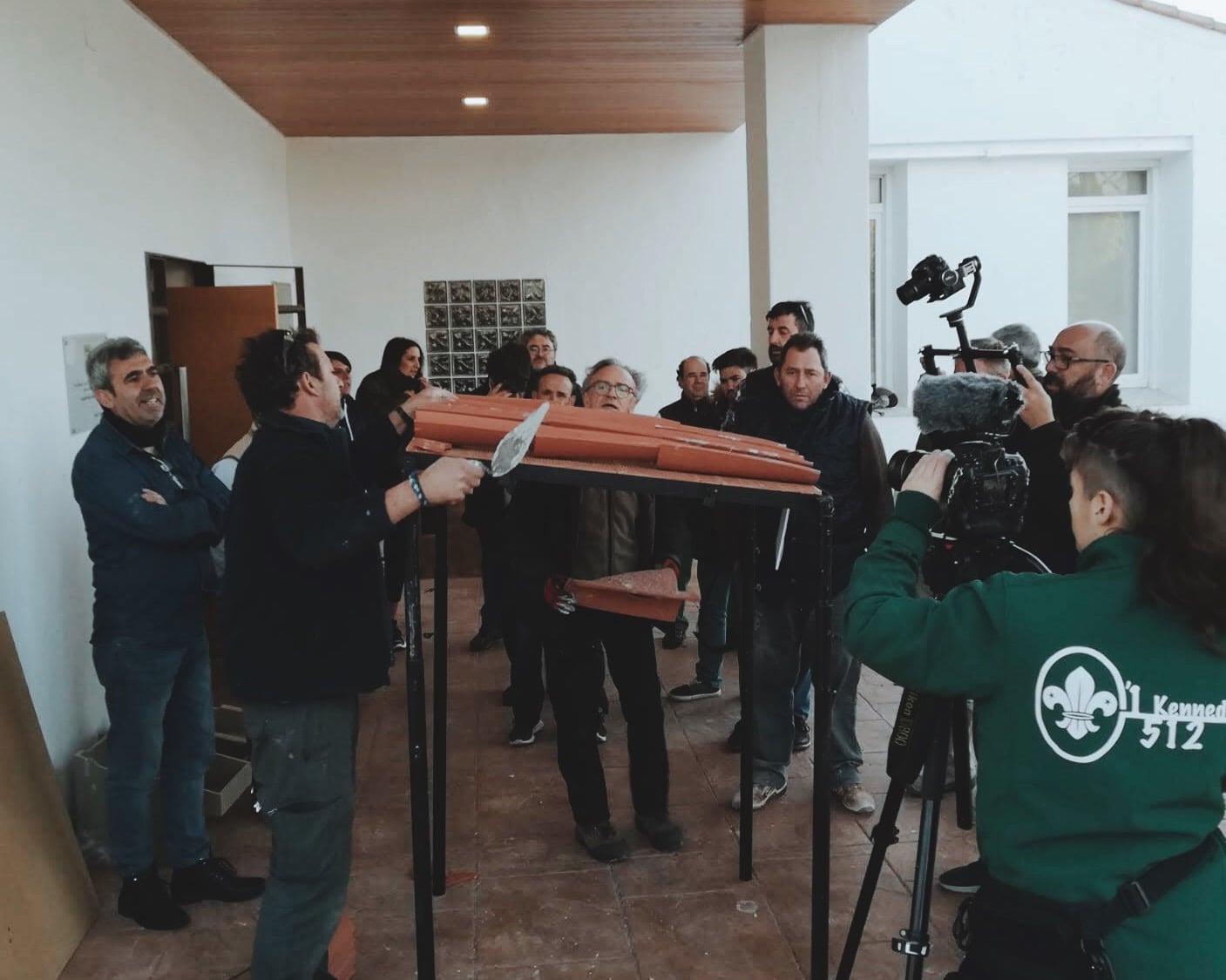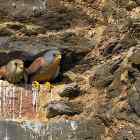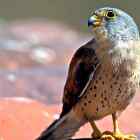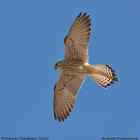UNDER THE LIFE-ZEPAURBAN PROJECT ENTITLED “MANAGEMENT OF URBAN SPAS IN EXTREMADURA”, WE ARE CONTINUING WITH THE WORKSHOPS FOR CONSTRUCTION COMPANIES THAT CARRY OUT WORKS ON BUILDINGS WITH A LESSER KESTREL PRESENCE.
OBJECTIVE
To discover in detail the proper way to carry out the works so that they are compatible with the presence of lesser kestrels.
WHO IT IS AIMED AT
Individuals and companies in the construction sector, in particular the staff members who carry out the work (masons, laborers, carpenters, etc.).
PLACE AND DATE
The workshop will be held in Zafra on November 28, 2019 in the afternoon at the Zafra Workshop School Training Center (former slaughterhouse, next to the bus station).
REGISTRATION AND CERTIFICATES
To attend it is necessary to register. Registration can be done by email at lifezepaurban@juntaex.es or by calling 924 002177. We can also give you more information about the workshop through those channels.
The General Directorate of Sustainability will accredit the knowledge acquired by the individuals participating in the workshops and they will receive a certificate that proves that they have received training to carry out work on buildings with a lesser kestrel colony presence. A list of companies with staff members with accredited experience will be prepared and it will be made public on the LIFE-ZEPAURBAN Project website.
MORE INFORMATION ABOUT THE WORKSHOP
Most of the construction companies that carry out works on buildings with a lesser kestrel presence lack experience in this type of specific work. Thus, it is key for those on site to deeply understand the proper way to carry out the works and for them to have all the tools they need to ensure that the work is carried out without a hitch.
The workshop will analyze the different materials that are specifically used in restoration work on buildings with the lesser kestrel (nests, adapted roofing tiles, putlog hole covers, etc.) and, above all, how these materials should be installed. It will be taught by construction and environmental professionals.
An initial theoretical block (30 minutes) will serve to learn about the biology of the lesser kestrel, its threats in terms of construction work at breeding colonies, urban SPAs, the Natura 2000 Network, and the mandatory regulations.
In the practical part (3 hours) nests will be installed and putlog holes will be adapted with the participation of all attendees. For this, there is a replica that recreates the various types of support (planks, phenolic board, sandwich sheets, onduline roofing, etc.), different types of roofing (Monk and Nun and mixed roofing tile types), as well as a replica of a wall with putlog holes.
